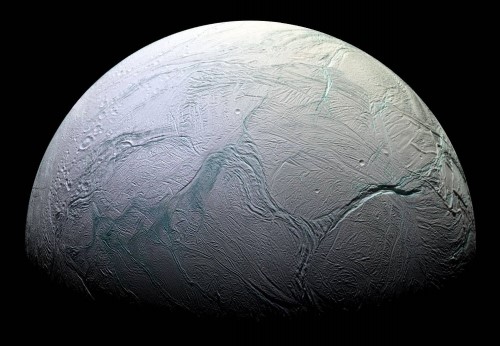
NASA should send a probe to Uranus within the coming decade as well as develop a craft to see if Saturn’s icy moon Enceladus harbours life in its interior ocean. Those are just some of the conclusions contained in the latest decadal survey of planetary sciences and astrobiology. The 780-page report, released today, prioritizes the scientific themes and concepts for US planetary science for the coming decade.
Composed by a 19-member steering committee convened by the US National Academies of Sciences, Engineering and Medicine, the report focuses on 12 priority science questions within three themes. “Origins” covers issues such as the evolution of the protoplanetary disk, accretion in the outer solar system, and the origin of the Earth and other bodies in the inner solar system. “Worlds” focuses on the evolution of, and interactions among, planets and accompanying bodies in the solar system. Meanwhile, “life” examines the evolution of life on Earth and the possibilities of life elsewhere.
The report outlines a list of space probes need to address these themes. In large-class missions, top priority goes to the Uranus Orbiter and Probe (UOP) – a $4bn multi-year mission intended to gain fresh knowledge of the Uranian system and ice giants. Uranus and Neptune are the only planets that have never been studied with a dedicated orbital probe and the UOP would carry out several flybys of Uranus and contain a probe to sample Uranus’ atmosphere. The report states that a launch within the next decade is “viable on currently available launch vehicles”.
The second highest-priority large-class mission is the Enceladus Orbilander, which would study the Saturnian satellite’s interior ocean and search for evidence of life. Launched in 1997, NASA’s Cassini spacecraft discovered that the icy moon has a subsurface ocean that vents water into space. The Enceladus Orbilander, costing around $5bn, would carry out orbital observations of Enceladus for over a year before landing on the moon, where it would spend two years studying the plume from its interior ocean.
This recommended portfolio of missions, high-priority research activities, and technology development will produce transformative advances in human knowledge
Robin Canup
The report also recommends that NASA maintains its Mars Exploration Programme, prioritizing the Mars Life Explorer as the next medium-class mission. The explorer would search for signs of life currently on the planet – rather than, say, ancient signatures as previous and current missions do – and access the habitability of the red planet. For NASA’s New Frontiers programme, which funds missions costing less than £850m, the report recommends the space agency cover mission themes such as a Ceres sample-return probe, a comet surface sample return, a Titan orbiter as well as a Venus explorer.
Threats from above
Closer to Earth, the report calls on NASA to enhance its detection and tracking of near-Earth objects (NEO) and to develop methods of deflecting those that threaten Earth. It calls on the space agency to support the development and launch of the space-based NEO Surveyor, which operates in the mid-infrared. Following the surveyor, as well at the launch of the Double Asteroid Redirection Test, NASA should develop a “rapid-response, short-warning” demonstration concept that would perform a fly-by mission of an NEO about 50–100 m in diameter – roughly the size of an object that poses a high probability of causing damage on Earth.
Robin Canup of the Southwest Research Institute, who co-chaired the report’s steering committee, says the document sets out an “ambitious but practicable vision” for planetary science exploration in the coming decade. “This recommended portfolio of missions, high-priority research activities, and technology development will produce transformative advances in human knowledge and understanding about the origin and evolution of the solar system, and of life and the habitability of other bodies beyond Earth,” she says.

Astro2020 Decadal Survey calls for ‘great observatory’ to succeed Hubble
The report is the first decadal survey to examine diversity, equity, inclusivity and accessibility in planetary science. “A strong system of equity and accountability is required to recruit, retain, and nurture the best talent into the community,” the report states. Although claiming that progress has been made, particularly in terms of women’s prominence in the field, “much work remains to be done, in particular to address persistent and troubling issues of basic representation by race/ethnicity”.
To make progress, the report recommends that NASA’s planetary science division implement codes of conduct for its missions, conferences and field campaigns. NASA – along with the other funders, institutions and professional societies – should also work to mitigate bias at all levels, for example by analysing decision-making practices and procedures as well as engaging with the community to develop initiatives to uncover and stop bias.”This is the first report to consider the state of the profession,” adds Canup. “To the extent we don’t have complete participation, we miss out on great ideas and great people.”



